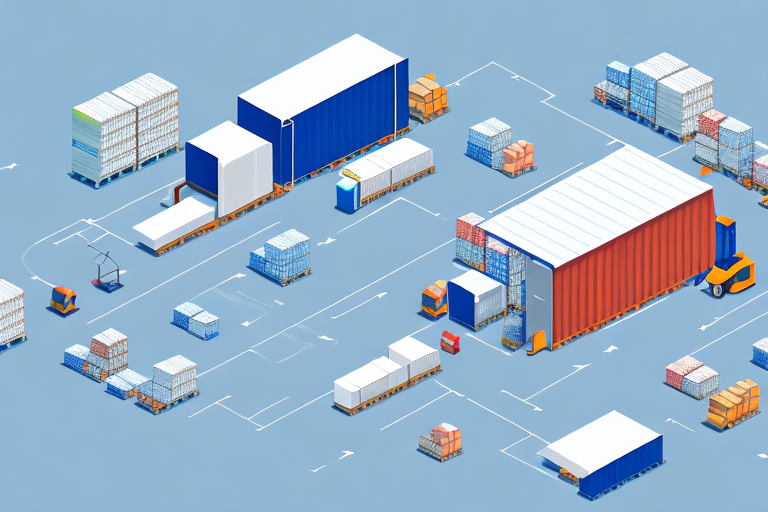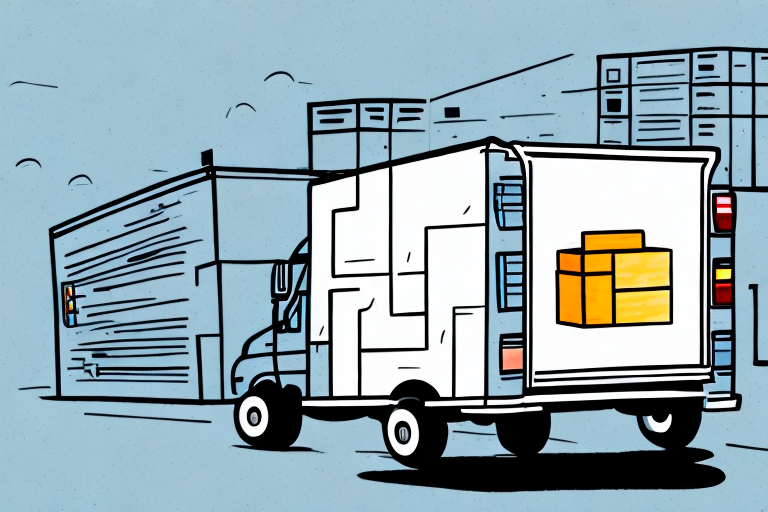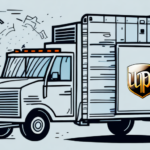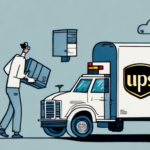Maximizing Efficiency with Liftgate Solutions in Your Supply Chain
Are you looking for ways to optimize your supply chain operations while minimizing costs and improving productivity? Investing in liftgate solutions could be the key to achieving these goals. This article provides an in-depth overview of liftgate solutions, exploring their benefits, types, and the factors to consider when selecting the right system for your business. Additionally, we discuss real-world case studies and future trends to help you make an informed decision. By the end of this article, you'll understand how liftgate solutions can support your business objectives and enhance your supply chain operations.
What are Liftgate Solutions? An Overview
Liftgate solutions are mechanical devices installed on the back of trucks and trailers, designed to lift and lower heavy or bulky items during loading and unloading. These systems can be powered hydraulically or electrically and come in various sizes and weight capacities to meet different business needs.
One of the primary benefits of liftgate solutions is the reduction of workplace injuries. According to the Occupational Safety and Health Administration (OSHA), manual handling of heavy items is a leading cause of workplace injuries. By automating this process, liftgates enhance safety and compliance with occupational standards.
Additionally, liftgate solutions increase operational efficiency by speeding up loading and unloading processes. Studies show that businesses using liftgates can reduce labor time by up to 30%, leading to significant cost savings and increased productivity.
Understanding the Importance of Efficiency in Your Supply Chain
Efficiency is the cornerstone of a successful supply chain, enabling businesses to maximize resource utilization while minimizing waste and delays. Implementing liftgate solutions contributes to this efficiency by streamlining the movement of goods, reducing the time and effort required for manual handling.
Integrating advanced technology further enhances supply chain efficiency. For instance, supply chain management software can optimize inventory levels and automate reordering processes, mitigating risks such as stockouts and overstocking.
Moreover, efficient supply chains have a positive environmental impact. By optimizing logistics and reducing unnecessary movements, businesses can lower their carbon footprint. Adopting green logistics practices, such as using electric vehicles and minimizing packaging waste, aligns operational efficiency with sustainability goals.
The Benefits of Liftgate Solutions for Your Business Operations
- Reduced Labor Costs: Liftgates minimize the need for manual lifting, enabling you to allocate labor resources more effectively.
- Improved Safety: By automating the lifting process, liftgates reduce the risk of workplace injuries and enhance overall safety.
- Increased Capacity: Liftgates allow for the handling of larger and heavier items, expanding your delivery capacity.
- Faster Deliveries: Streamlined loading and unloading processes lead to quicker turnaround times and improved customer satisfaction.
- Product Protection: Liftgates provide a stable platform for handling goods, reducing the likelihood of damage during transportation.
Furthermore, liftgate solutions can be customized to fit the unique requirements of your business, whether you operate small delivery vans or large transportation trucks. This flexibility ensures that you invest in a system that aligns perfectly with your operational needs.
Different Types of Liftgate Systems Available in the Market
The market offers a variety of liftgate systems, each tailored to specific applications and industries:
- Tuckaway Liftgates: Known for their space-saving design, tuckaway liftgates retract into the vehicle's frame when not in use, making them ideal for businesses with limited space.
- Railgate Systems: These liftgates feature rails that extend for handling heavier and bulkier items, offering increased stability and support.
- Cantilever Liftgates: Highly versatile, cantilever liftgates can reach greater heights and accommodate a wide range of load sizes, making them suitable for diverse applications.
Specialized liftgate solutions are also available for industries with unique requirements. For example, the food and beverage industry benefits from liftgates with refrigeration and insulation features, while the medical sector requires hygienic surfaces and easy-to-clean components to maintain sterile environments.
When choosing a liftgate system, consider the specific demands of your industry to ensure optimal performance and compliance with industry standards.
Factors to Consider When Choosing the Right Liftgate Solution for Your Business
- Weight Capacity: Assess the maximum weight your liftgate needs to handle, ensuring it meets your operational demands.
- Platform Size: The size of the liftgate platform should accommodate the dimensions of your typical shipments.
- Installation Requirements: Consider the ease of installation and whether your vehicle is compatible with the liftgate system.
- Budget: Evaluate the initial investment against long-term savings to determine the most cost-effective solution.
- Vehicle Compatibility: Ensure the liftgate is suitable for the type of vehicle you operate, whether it's a van, truck, or trailer.
Additionally, consider the specific applications and operational needs of your business. Understanding the types of items you frequently transport and the distances involved will help you select a liftgate system that enhances efficiency and meets your logistical requirements.
How to Determine if You Need a Liftgate Solution in Your Supply Chain
Evaluating the necessity of a liftgate solution involves assessing your current operations for inefficiencies and potential risks:
- Loading and Unloading Delays: Frequent delays in these processes may indicate the need for mechanized assistance.
- High Labor Costs: Excessive spending on manual lifting can be mitigated with liftgate automation.
- Safety Concerns: Repeated injuries or safety incidents related to manual handling highlight the need for safer solutions.
The nature of your products also plays a crucial role. Businesses transporting heavy or bulky items, such as furniture, appliances, or construction materials, benefit significantly from liftgate solutions. Additionally, if deliveries are made to locations lacking loading docks, a liftgate can simplify the loading process, enhancing both efficiency and safety.
Considering the long-term advantages, liftgate solutions offer a worthwhile investment. While there is an initial cost, the reduction in labor expenses, decreased injury-related costs, and improved operational efficiency provide substantial returns over time. Implementing a liftgate system not only streamlines your supply chain but also contributes to a safer and more productive work environment.
The Role of Liftgate Solutions in Reducing Costs and Improving Productivity
Incorporating liftgate solutions into your supply chain significantly impacts both cost reduction and productivity enhancement:
- Labor Cost Savings: Automated lifting reduces the need for manual labor, allowing you to allocate resources more effectively.
- Enhanced Efficiency: Faster loading and unloading processes lead to shorter turnaround times and increased operational throughput.
- Safety Improvements: Minimizing manual lifting decreases the likelihood of workplace injuries, lowering workers' compensation and related expenses.
- Expanded Capacity: Ability to handle larger and heavier items opens up new business opportunities and customer segments.
Moreover, liftgate solutions contribute to a safer work environment, which can boost employee morale and reduce turnover rates. A safe and efficient workplace not only saves costs related to accidents but also fosters a positive company culture, further driving productivity.
By enabling the handling of more substantial loads with ease, liftgates support business growth. Companies can take on bigger projects and serve a broader customer base without compromising on efficiency or safety.
Comparing the Costs of Different Liftgate Solutions for Your Supply Chain
When considering a liftgate solution, it's essential to evaluate the costs and benefits of different systems:
- Initial Investment: Higher-priced liftgates may offer advanced features and greater durability, leading to long-term savings.
- Maintenance Costs: Consider the ongoing maintenance requirements and the availability of service support.
- Energy Consumption: Electric liftgates may have higher upfront costs but can be more energy-efficient compared to hydraulic models.
- Installation Expenses: Factor in the costs associated with installing the liftgate on your vehicles.
By comparing various liftgate options, you can identify the system that offers the best balance between cost and functionality. Investing in a liftgate that aligns with your budget and operational needs ensures that you receive maximum value and efficiency gains.
Tips for Maximizing the Efficiency of Your Liftgate Solution
- Regular Maintenance: Schedule routine inspections and maintenance to ensure your liftgate operates smoothly and reduces the risk of downtime.
- Proper Loading Techniques: Train employees on optimal loading procedures to enhance safety and prevent equipment damage.
- Identify Improvement Areas: Continuously assess your operations to identify and address any inefficiencies related to liftgate usage.
- Utilize Automation: Integrate liftgate operations with your inventory and transportation management systems for seamless workflow.
Implementing these best practices ensures that your liftgate system operates at peak efficiency, providing ongoing benefits to your supply chain operations.
Common Challenges Faced While Implementing a Liftgate System and How to Overcome Them
Introducing a liftgate system can present several challenges, but these can be effectively managed with proper planning and support:
- Installation Costs: High initial expenses can be mitigated by evaluating the long-term savings and financing options available.
- Employee Training: Providing comprehensive training ensures that staff are proficient in operating the liftgate, enhancing safety and efficiency.
- Workflow Adaptation: Integrating a new system may require adjustments to your existing processes. Collaborate with liftgate providers to customize solutions that fit seamlessly into your workflow.
Working with experienced liftgate solution providers can facilitate a smooth implementation process. They can offer guidance on system selection, installation, and training, ensuring that your transition to using liftgates is efficient and effective.
Case Studies: Real-Life Examples of Businesses that Improved their Supply Chain Efficiency with a Liftgate Solution
Several businesses have successfully integrated liftgate solutions to enhance their supply chain operations:
- Furniture Retailer: By installing liftgate solutions on their delivery trucks, a furniture retailer reduced loading time by 50% and eliminated safety incidents related to manual lifting, resulting in increased productivity and lower insurance costs.
- Appliance Distributor: Implementing cantilever liftgate systems allowed an appliance distributor to handle larger shipments efficiently, boosting delivery capacity and customer satisfaction.
These case studies highlight the tangible benefits of liftgate solutions, demonstrating significant improvements in operational efficiency, safety, and customer service.
Future Trends and Innovations in the World of Liftgate Solutions
The liftgate industry is evolving with technological advancements and innovative features that promise to further enhance supply chain efficiency:
- Automated Liftgate Systems: Integration with IoT and smart technology allows for automated operations, predictive maintenance, and real-time monitoring.
- Enhanced Safety Features: Future liftgates will incorporate advanced safety mechanisms such as obstacle detection and automated shutoff to further reduce accident risks.
- Customization Options: Increased customization capabilities will enable businesses to tailor liftgate systems to their specific needs, ensuring optimal performance.
Staying abreast of these trends will enable businesses to adopt the latest technologies, ensuring their supply chain remains competitive and efficient.
Conclusion: Why Investing in a Liftgate Solution is a Smart Business Decision
In today's competitive business landscape, optimizing supply chain operations is essential for maintaining efficiency and meeting customer expectations. Liftgate solutions offer a multifaceted approach to achieving these objectives by enhancing safety, reducing labor costs, and increasing operational capacity. By carefully selecting a liftgate system that aligns with your business needs, you can realize substantial improvements in your supply chain efficiency and overall profitability.
Investing in a liftgate solution not only addresses immediate logistical challenges but also positions your business for sustainable growth and success. Embrace liftgate technology today to drive your business forward and stay ahead in the ever-evolving market.






















